UPDATE: November 15, 2024
We recently received word that we got a nice grant from Legacy Fund Boston, which will allow us to move into an active phase on our Cedar Grove Cemetery project, as we try to find a fitting way to memorialize our neighbors from the Home For Aged Colored Women on Beacon Hill. We have also partnered with the Boston Women's Heritage Trail, whose mission is perfectly aligned with what we are trying to do. Be in touch if you are interested in this.
ORIGINAL POST, FROM JUNE 2023 IS BELOW.
This is the long version of the story of how I helped start a conversation about some women buried in the cemetery behind my house.
Cedar Grove Cemetery is a special place and it’s very special to me. My Mom, grandparents, favorite aunt and many friends and neighbors are buried there.
And there is also this, which makes me LOL every time I see it, but unnerves some of my friends. My siblings share my gallows humor. My brother said we could drop me in between and stick a comma there, to save some money when the time comes. We’re half Irish, obviously.
I grew up on Granville Street, one hundred feet away from the site, and we used it as our park. I grew up in the 60’s and 70’s, when the Neponset River Trail didn’t exist, Dorchester Park wasn’t safe, and a visit to Toohig Park involved crossing Gallivan Boulevard, which the grownups forbid us to do. So Cedar Grove was our green space. As an adult, I purchased a house adjacent to the cemetery, and this is the view from my back porch.
The cemetery is literally what was the backyard of the house I own, and I bought the house from the cemetery in 2012, after they split the lot and took the land behind my house for burials. When I am home in the mornings, I frequently see and hear funerals, including bagpipes and other music.
In 2020, as COVID descended on the world, I sat in my kitchen, listening to earth movers hour after hour, seeing burials but not funerals. That was a tough year. I was working in the Mayor’s office in Boston, dealing with actual life and death situations, as we all lived through that terrifying lockdown. My own uncle was buried in Cedar Grove in April of 2020 without a funeral, after succumbing to COVID in a nursing home. Those were very dark days.
In 2021, I left that City Hall job, and started spending LOTS of time in the cemetery walking Mercy, my dog. I mean LOTS of time. As COVID pushed all of us to outdoor exercise, and the usual places were crowded, I roamed the cemetery with a few other dog walkers for an hour or more every day, exploring the roads I hadn’t yet seen. It’s a beautiful place, well kept, lush and green when the weather helps. When I walk there, I see a public art park that holds stories about the settling and changing of my neighborhood. I see immigration and migration patterns. I see stories about how we care for our departed. I see the markers of people who have died that second time, not tended to by anyone other than the cemetery staff. (I’ve read that it’s an old Egyptian belief, and a traditional Jewish belief that you die twice. I also saw on Reddit that the thought is attributed to that great philosopher Bansky, who said “I mean, they say you die twice. One time when you stop breathing and a second time, a bit later on, when somebody says your name for the last time.” If it’s on the internet, it must be true.)
I see tributes to people who are still very much missed,
and this one makes me laugh for some reason, which likely says more about me than about the occupants. But was he REALLY loved by ALL who knew him? Surely there was SOMEONE who felt something less than love. Was Martha under duress?
And this one is a gem.
As is this.
One day, in 2021, I was looking down as I walked and noticed these two plots, side by side.
On the top, you see “The Home For Aged Women,” (one assumes white) and on the bottom you see “The Home For Aged Colored Women.” On the top, you can see rows of little vertical headstones. They’re in rough shape, but some names are legible, and I think all would be if the stones were cleaned and restored. On the bottom, there are no headstones, just the one at-grade marker.
A few days later, in another, newer section of the cemetery, I was again looking down, and noticed this, on the side of a hill overlooking the Neponset River.
I was sad and curious, so I called my friend Robert MacEachern, who is on the Board of Trustees at the cemetery. (He is also a cemetery dog walker, and his family is also buried there.) He told me that he had seen them some years ago, and looked at some of the records at the cemetery. He found some information about the Home for Aged Colored Women (HACW), a congregate living site on Beacon Hill that housed older African-American women. It occupied several different Beacon Hill locations between 1860 and 1944. You can find quite a bit of information about it on the website of the West End Museum. He knew that at some point, the home contracted with Cedar Grove to have some residents buried there. They filled up the first site, and then acquired the second. He and I then contacted the Massachusetts Historical Society (MHS), and found that they had many documents pertaining to the home. We also learned that when the Home was sold in the mid-20th century, the proceeds from the sale were used to establish the Grimes-King Foundation, which still exists and still serves Black elders in our community.
In case it’s not obvious, Robert and I are both white, as is most of the leadership of the cemetery, and we were cognizant of the fact that if there was a story here, it wasn’t really only ours to tell. We quickly reached out to a group of friends, mostly women of color who live in the neighborhood, to let them know what we found. I also separately reached out to my friend and former colleague Dr. Karilyn Crockett. She is a brilliant historian, city-maker, teacher and thinker, and like Robert and me, a Dorchester native.
Mostly, I wanted to find their names, and maybe install some kind of marker that told more of their story, but wanted to make sure that doing so was right, and not a trigger for people with experiences I can’t imagine to imagine.
In December of 2021, in the midst of another horrible COVID spike, we had a Zoom call to tell people about the information we had found. An ad hoc group advisory was formed, and has come to include many friends. It was a moving and emotional call, with conversations about personal experiences related to the south to north migration of Black women like those we were seeing in the HACW holdings at MHS.
We approached Cedar Grove Cemetery leadership (beyond Robert, who was always all in to try to figure out the proper way to memorialize these women) and told them what we were finding. They expressed support for exploration. We simultaneously approached Grimes-King to fill them in, because without their support, we would not have felt right about moving forward with anything. We had several conversations with them, and they were very open to exploring together to honor a legacy that puts them near its center. They took a vote recently and unanimously gave us their blessing to move forward.
In 2022, Karilyn Crockett turned the initiative into an assignment for her graduate students at MIT, and they dug into the archives at the cemetery and MHS, as well as other sources. Over the course of 14 weeks, these students did an incredible job. They found the names of 133 women buried in those two plots in Cedar Grove. Not only that, but they also found STORIES. Lots of stories. MHS has some of the minutes of board meetings for HACW, which reveal lots of information about some of the residents (called “inmates” in the materials, which is certainly jarring). We can glean all kinds of things about health care, worship, friendships, dietary habits, rivalries, families – so many things. And some of them were formerly enslaved.
When we started this, I imagined we might find some names, and I would have considered that a huge accomplishment; but these young researchers found patterns and narratives that help to tell one of the stories of migration to Boston by one very narrow demographic group. Let’s be honest – there are lots of accounts of how the Pilgrims got here and volumes and volumes about how my people — the Irish — came to settle in Boston. There are lots of Boston immigrant histories, but this group has by and large not been the subject of that kind of study. The students created narratives and booklets and pieced together stories that made some of these women come to life. Karilyn has all of that information, and we will sometime soon figure out how to display it.
In the spring of 2022, on the last day of class, Karilyn’s students visited the cemetery, and we met over there. We walked to the sites, and spontaneously decided to read the names of the women. Though it’s likely that there were SOME graveside services for some residents of HACW, it’s also just as likely that those names had never been said aloud at those sites. It was an impromptu impulse, and it was as moving as it sounds.
In 2021, we started planting flowers at the sites to draw some attention. The cemetery has this program that allows families to pay to have flowers planted on the graves of their loved ones. I’ve been doing it for my family for years, and in 2022, and again in years since, we did it for the residents of HACW. (Thanks to the anonymous donor who paid for this year’s plantings. And thanks to Sid Sibley, the superintendent of the cemetery for scrubbing the stones so that they almost gleam.)
Last week, we held a community meeting at the cemetery to start the process of community outreach and collaboration we will pursue as we try to figure out the best way to memorialize these women. About five times as many people as we were expecting showed up. The 50 or so of us visited the sites and read the names again, this time with an even more accurate and complete list compiled by Karilyn. Many of the people who came (mostly women) told me that they had seen and wondered about the sites. Two of them told me when they saw the flowers pop up, they got emotional. Most of the people who came live near the cemetery, and like me, long to be good neighbors to the women from HACW.
There was on TV and radio story about this last week that characterized me as some kind of amateur sleuth stumbling across some unknown history while walking my dog. That doesn’t really capture the story. So far, this has been an incredible journey in the company of friends, trying to navigate questions of agency and ownership inherent in an initiative like this.
What’s next? Well, we have filed the paperwork to establish Friends of Cedar Grove Cemetery as a 501 (c)3. This will allow us to have some structure, and will also allow the cemetery to retain that structure for other projects once this one has been realized. I think we will draft a Request for Ideas (RFI) to get people thinking about what (if anything) we might do to name these women in a more permanent way. Doing this will require raising some money, which I am happy to guide. I am also happy to step aside, if someone else wants to do it. We need a website. (Any volunteers?) We started a listserve, and I am happy to add you if you ask. Just leave a comment below or send an email.
And I wonder if any descendants will come forward. We would of course love to take our direction from them if they do.
I also think that there are very real research implications attached to this initiative, and I am hoping that what we found might spur more research, about these women, and other people like them. I think there is a book in here, but it’s not mine to write. Regardless, I hope some of the work Karilyn’s students and Robert and I did will be helpful to someone.
Next time you are in the neighborhood, please stop by the cemetery and pay your respects. One site is on Linden Street and the other on Beech. Just look for the flowers.
****************************
I have two Substacks, and I am much more active on the other one, which you can find here, if you are interested.




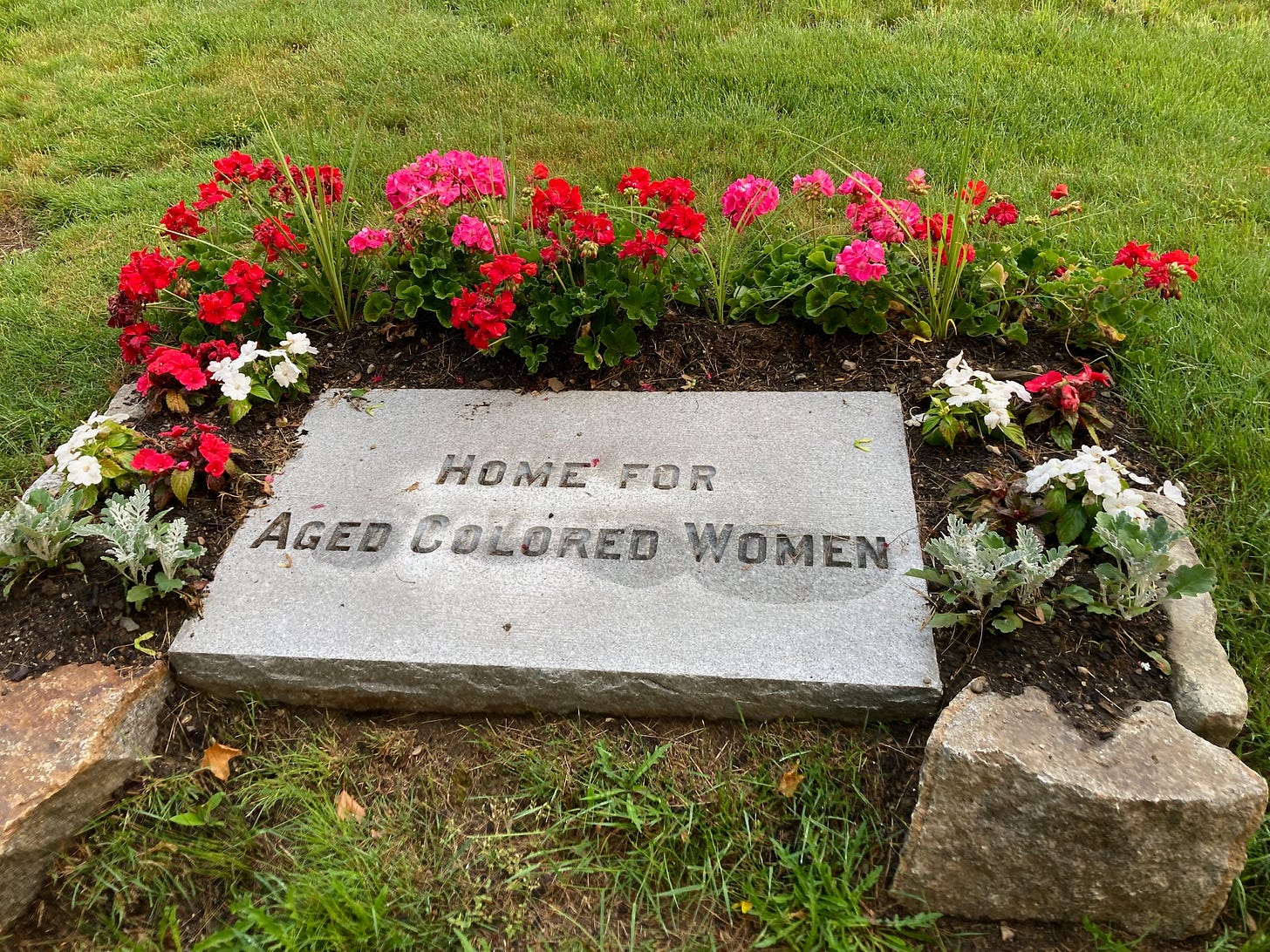
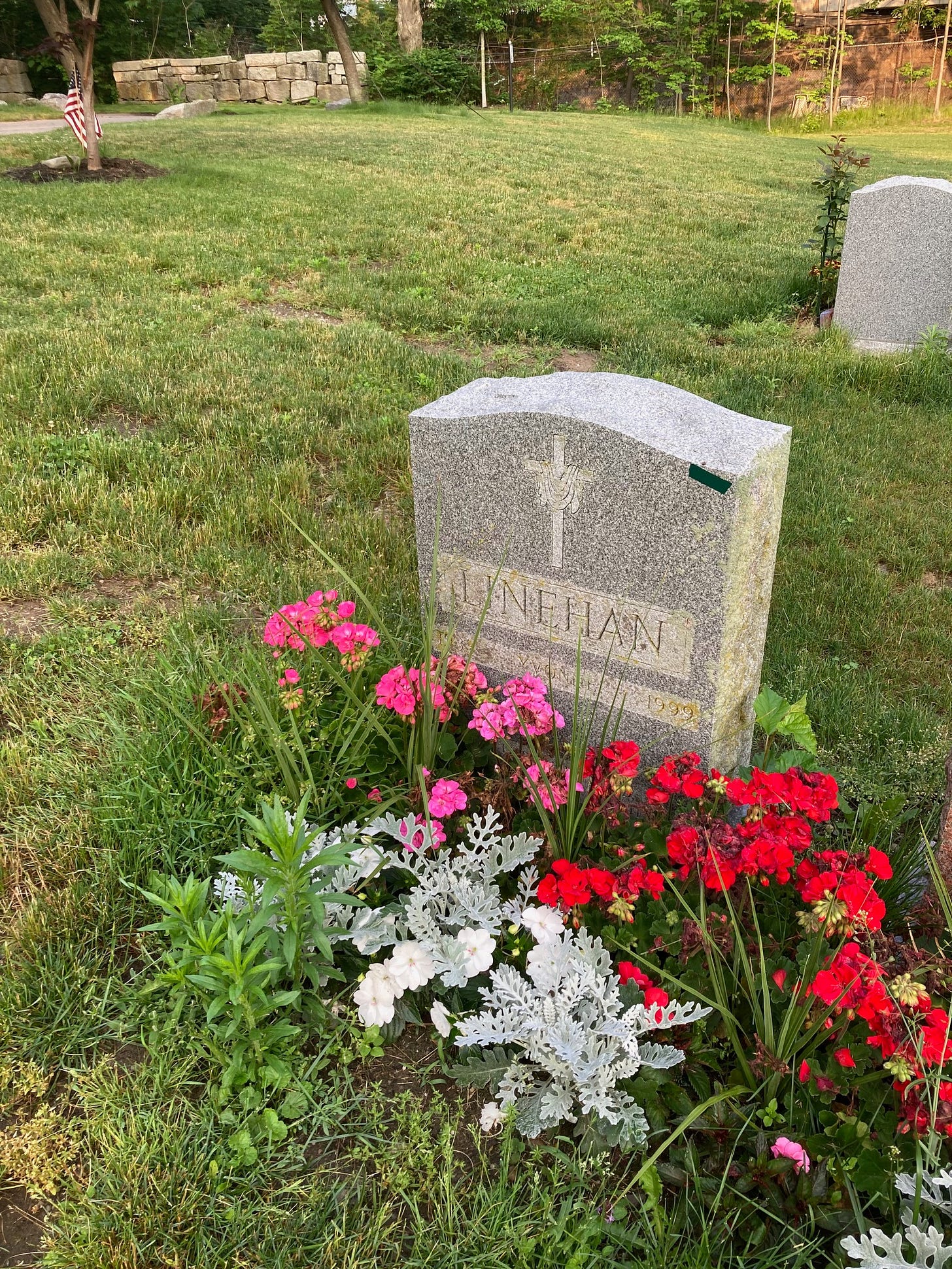

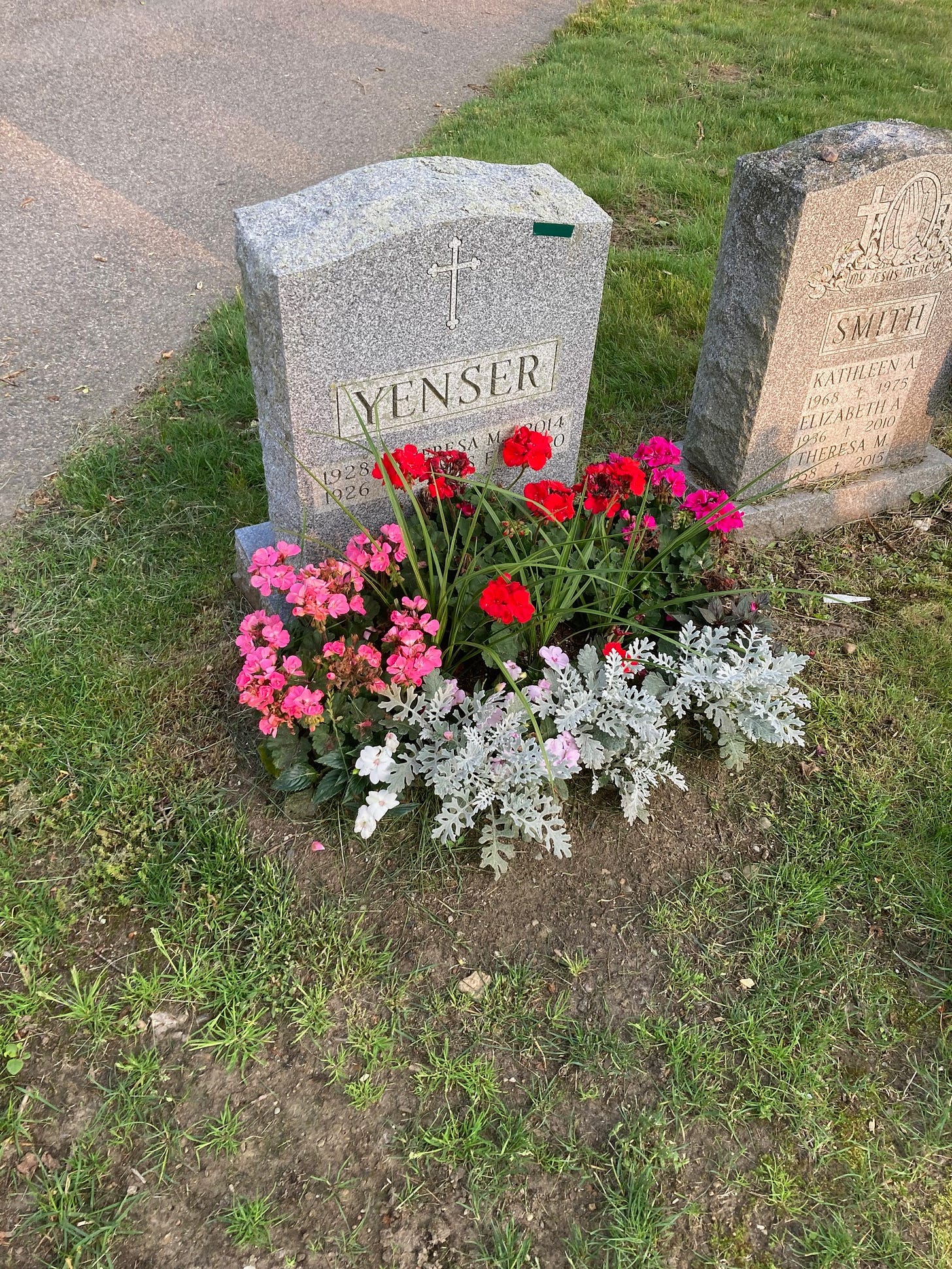

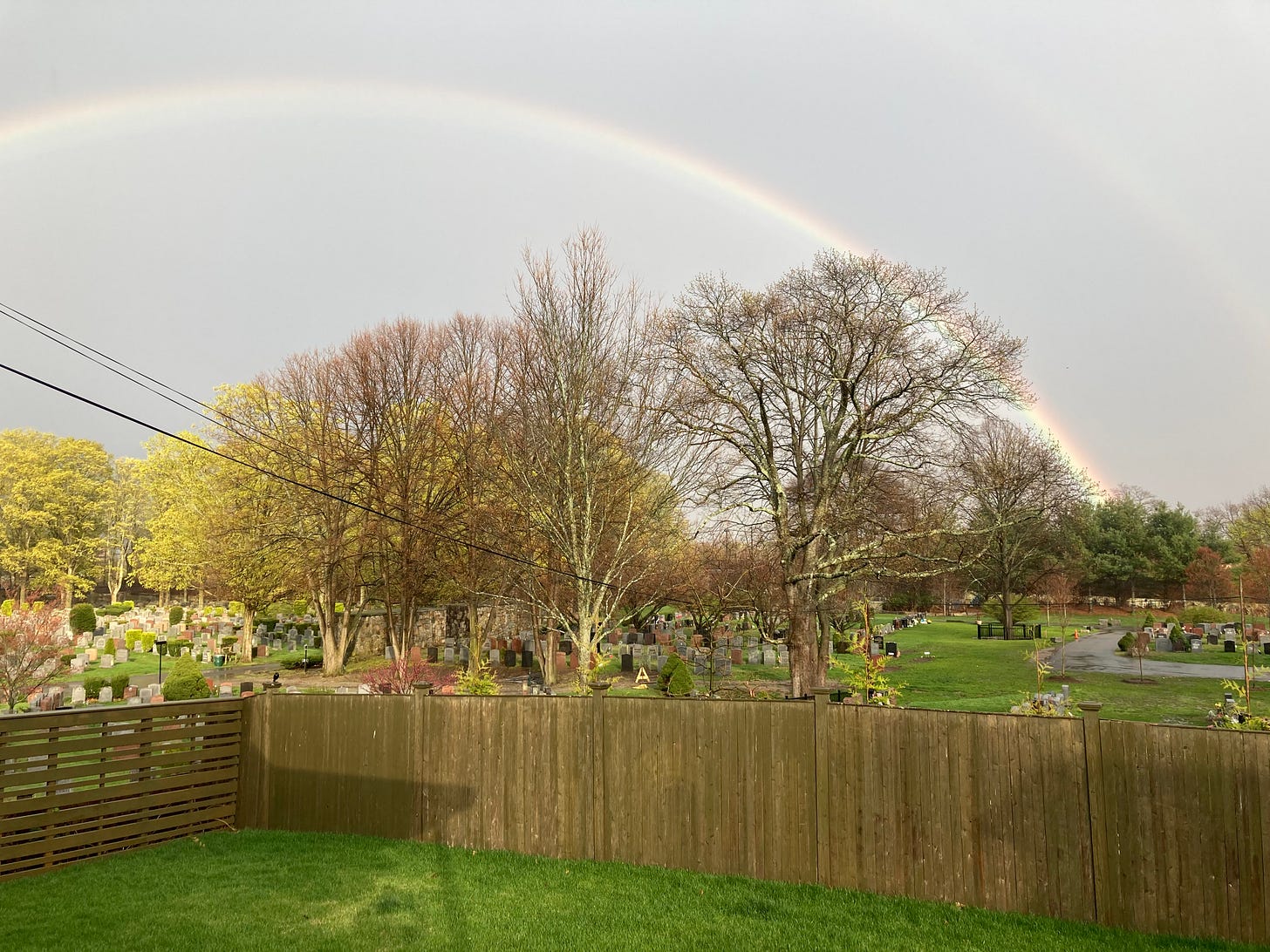
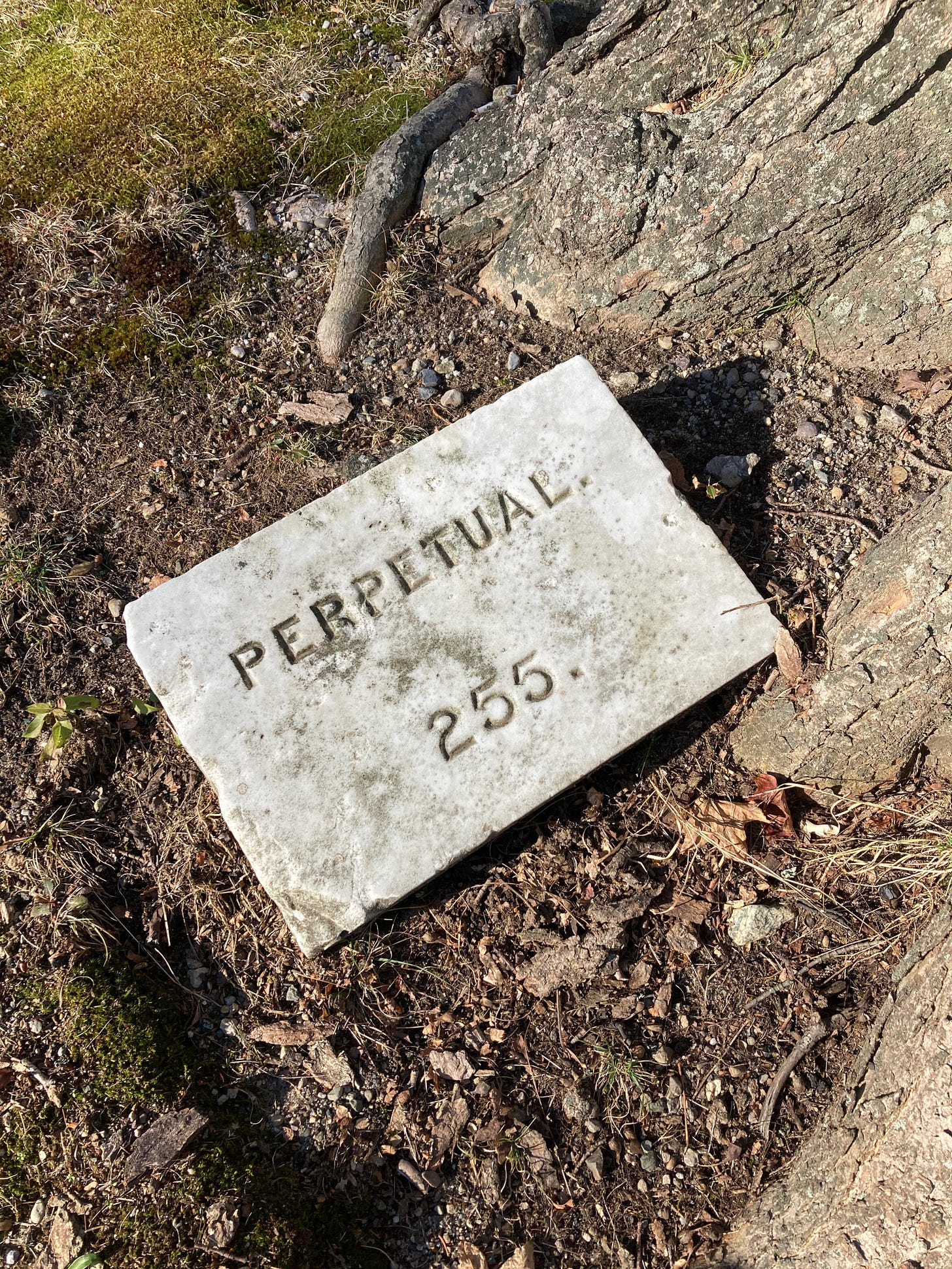
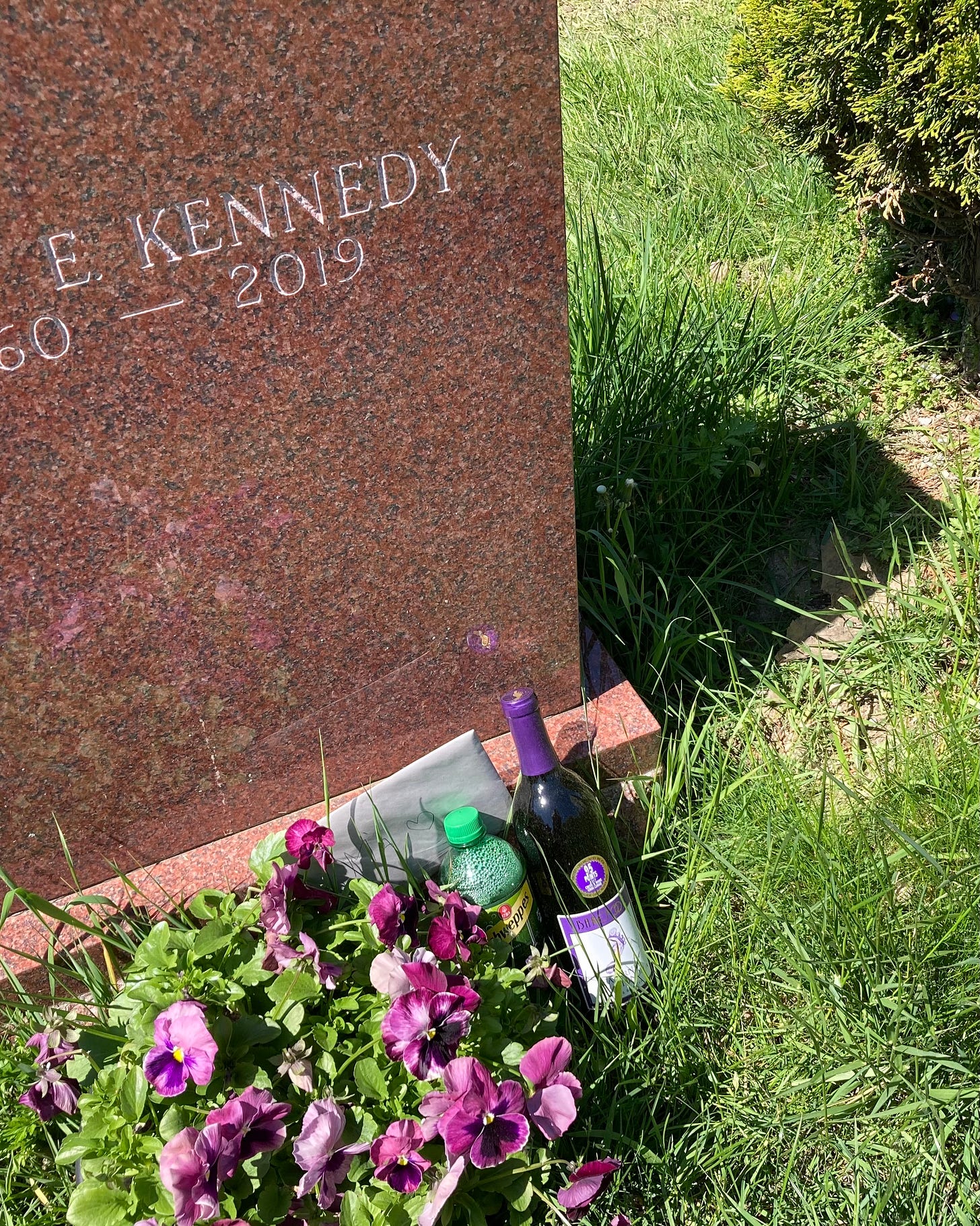

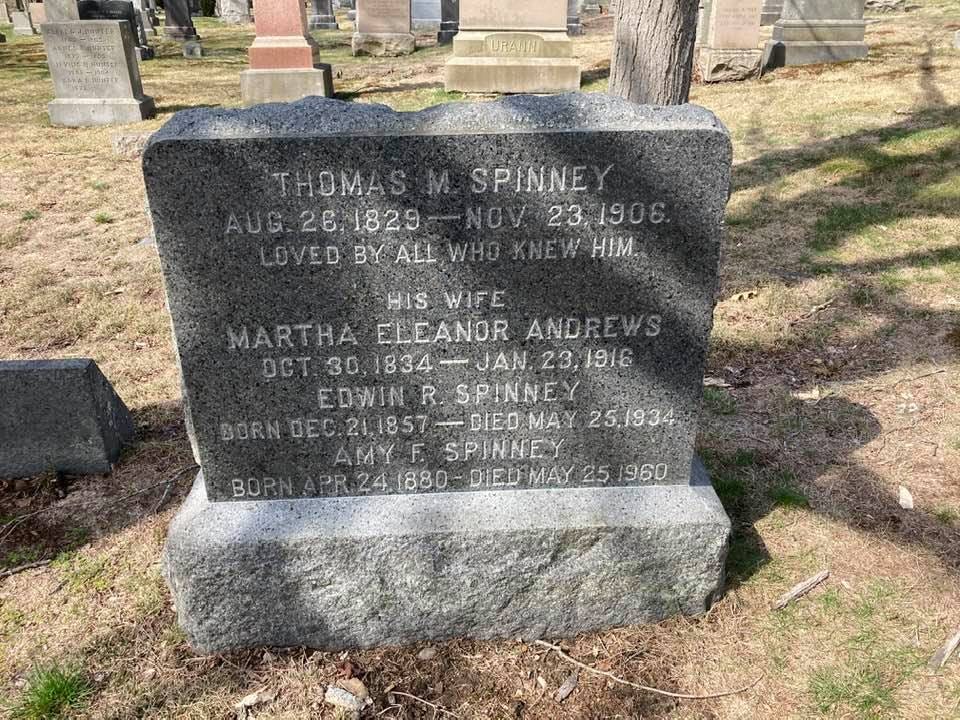
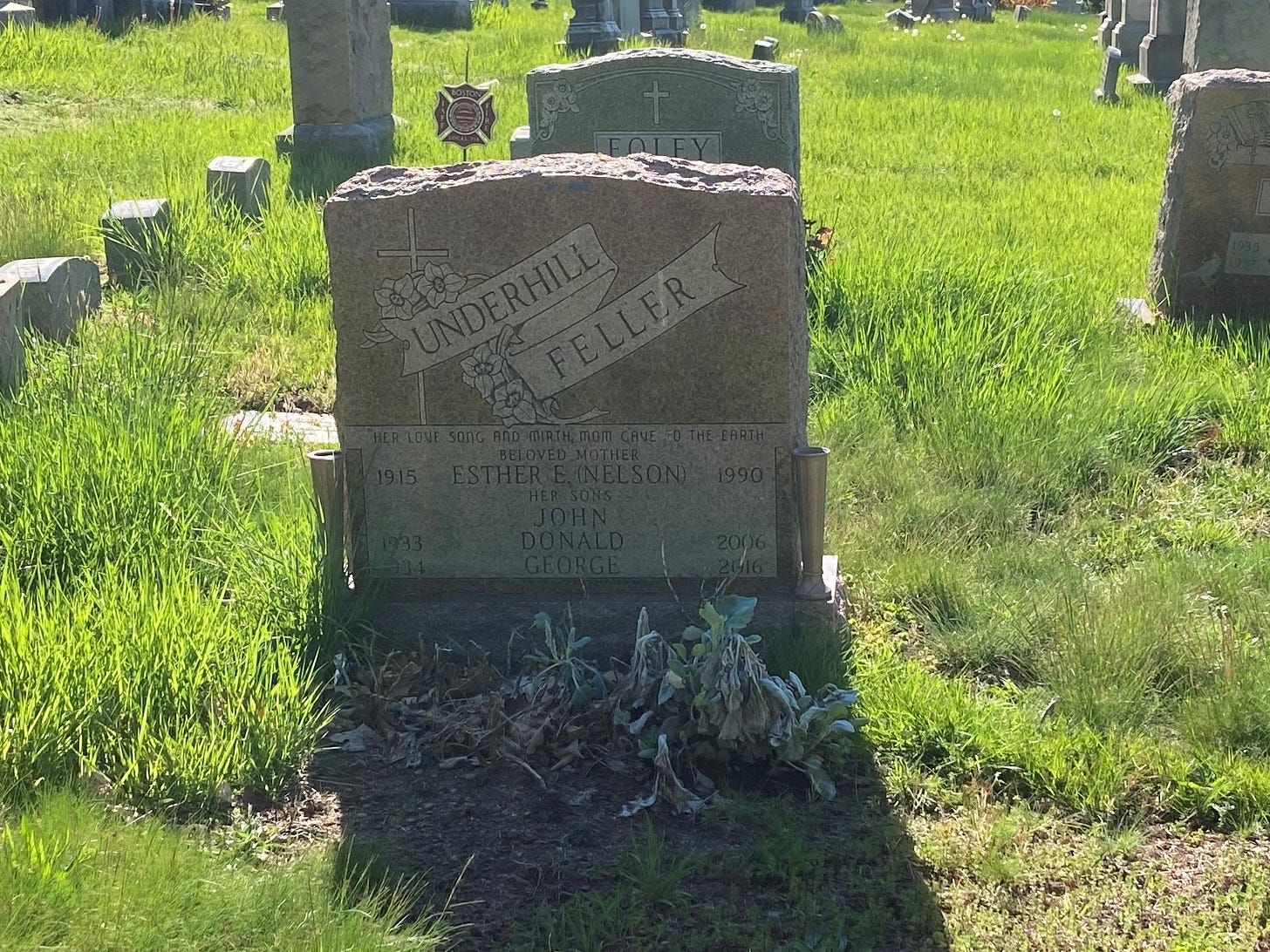
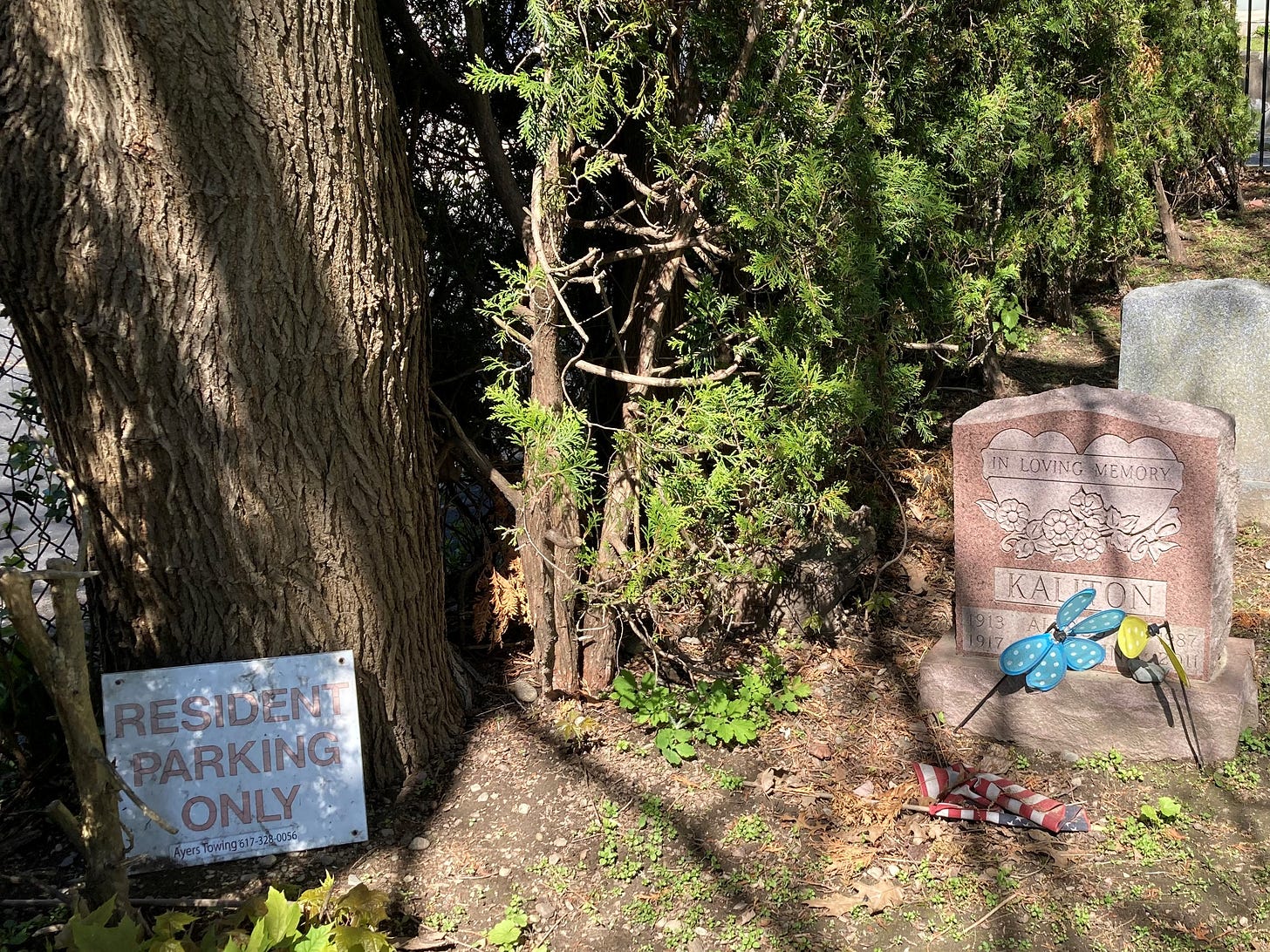

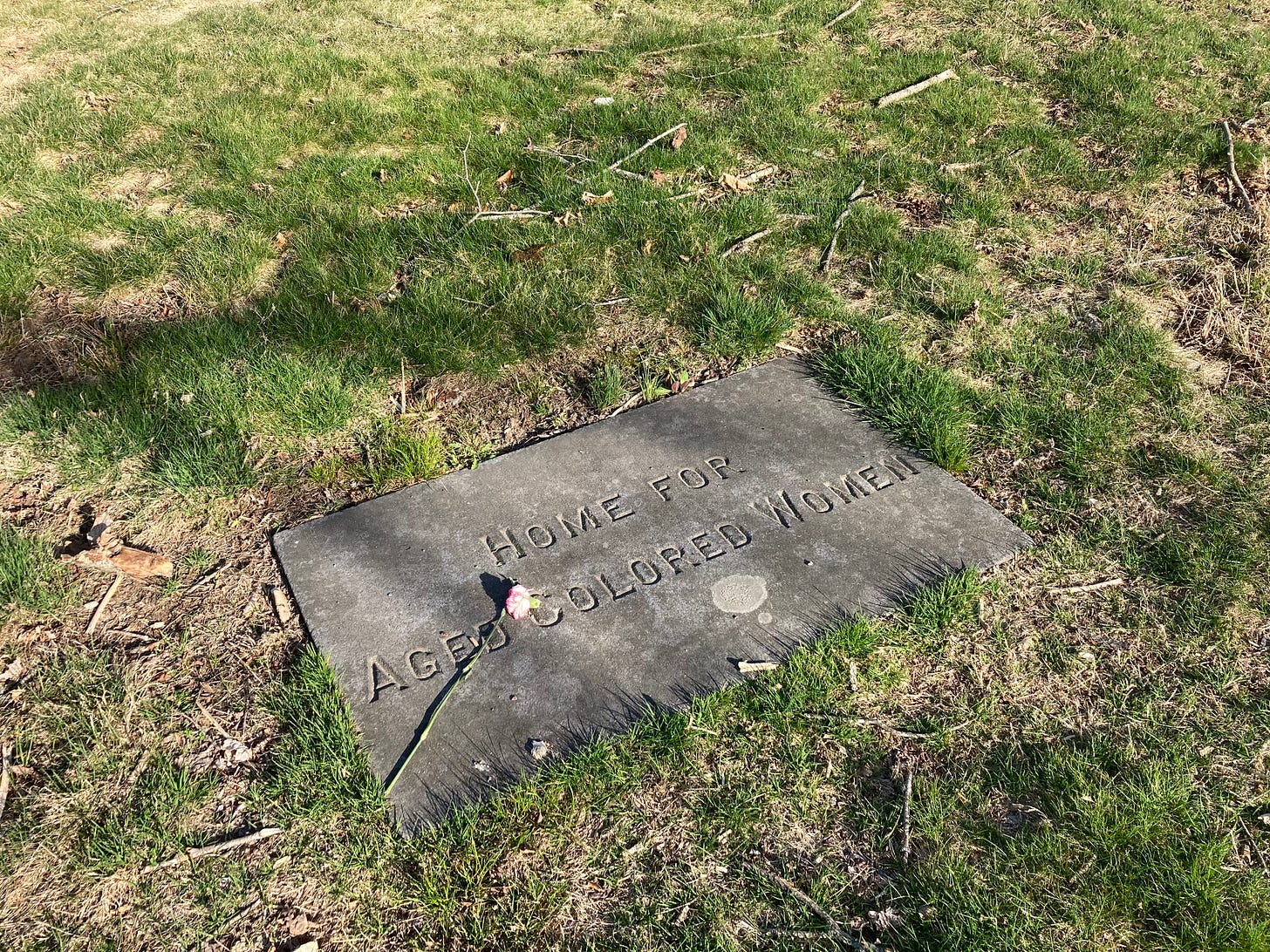

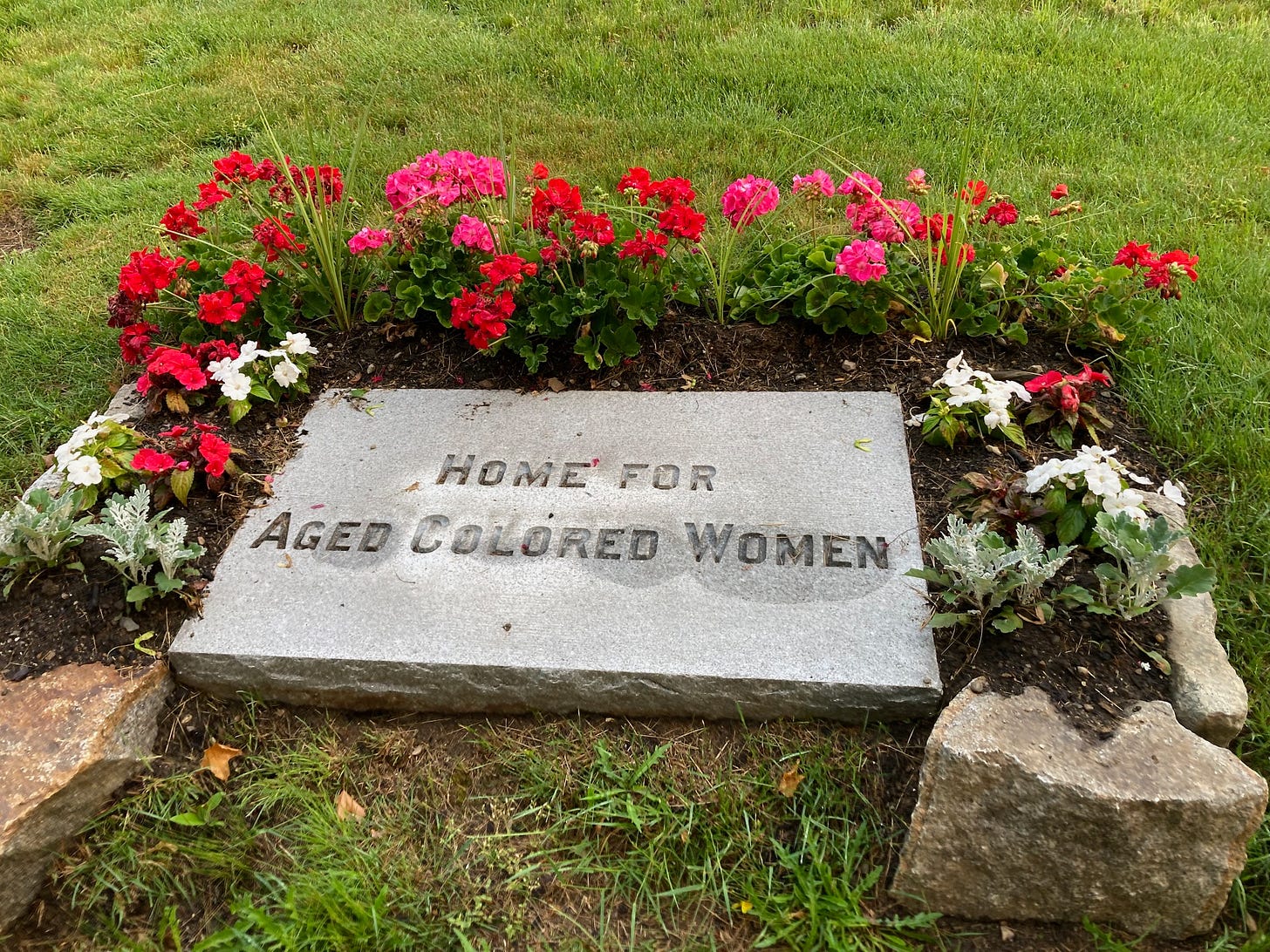
My daughter moved to the Cedar Grove neighborhood last year, and since then, we have enjoyed many walks in that beautiful place. It has come to have important meaning for me. Your post, so respectful of those interred and those who mourn them, is rich with information and sensitive advocacy. I've been especially intrigued by the marker for the Home for Aged Colored Women, and I thank you for the backstory. Please include me on your list serve.
Joyce, I somehow never read this story last year, but it’s beautiful. At my work, we are part of a project called Leaves of Remembrance where we install a brass leaf with a name on it for folks who die while living unhoused in Seattle, which is a shamefully long list every year. It’s a different story, but I compare it because of your note about a website. The Leaves of Remembrance website often ends up connecting with folks from several states away, who’s lost touch with a brother, uncle, mother, etc, and had no idea that person had ended up in Seattle, or unhoused, and that they died. But they’ve been searching, until they found a hit on our website. We’ve had people fly in to join us for the leaf laying ceremonies, because it gives some kind of closure, and as you note, it’s powerful to hear their name read aloud. So I guess this is a vote that a website could be very meaningful to some folks that you don’t even know yet. And yes please add me to the list serve. Thank you for this work and this story. And I’m going to go listen to the radio story and picture you as Nancy Drew.